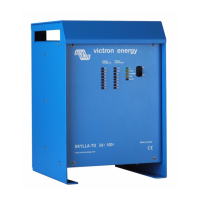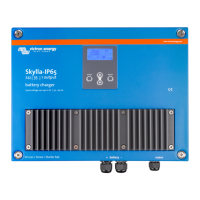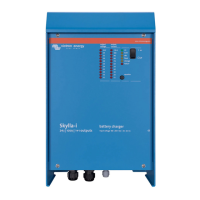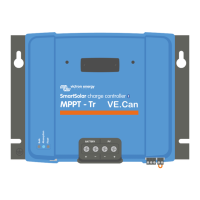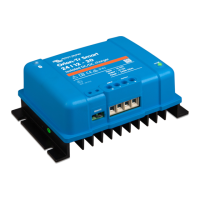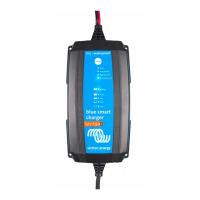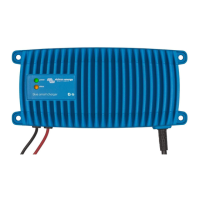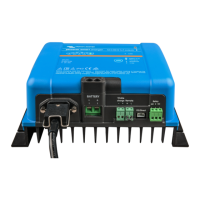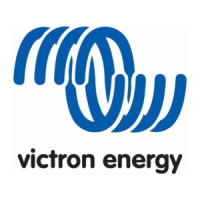
Do you have a question about the Victron energy SKYLLA-TG 24/50 and is the answer not in the manual?
| Output Voltage | 24 VDC |
|---|---|
| Output Current | 50 A |
| Efficiency | up to 94% |
| Battery Type | Lead-acid |
| Charging Algorithm | Adaptive |
| Protection | short circuit, over temperature |
| Operating temperature range | -20°C to +60°C |
Victron Energy's reputation as a power system designer and manufacturer.
Manual covers installation, functionality, and operation of specific Titan Generation battery chargers.
Crucial safety information on electrical hazards, battery handling, and operational precautions like mains disconnection and gas venting.
Explains the charger's IUoUo charging characteristic, stages, and continuous battery voltage/current measurement.
Lists recommended battery capacities for Titan charger models and notes on charging traction batteries.
Describes internal electronic protection features including current, short circuit, input, and over-voltage protection.
Instructions for mounting, connecting earth, and connecting the battery, including recommended cable thickness.
Details on operating the charger, including front panel indicators, operation sequence, and charging modes.
Recommendations for maintaining the charger, focusing on cleanliness and annual battery connection checks.
Recommends permanent boost-charging for 10 hours in specific cases, with warnings against misuse.
Details on changing float and boost voltages using potentiometers and DIP switches for optimal battery charging.
Explains setting equalize-charge mode duration to 0, 4, 8, or 12 hours using DIP switches.
Compensating for voltage loss with a diode-splitter by raising charging voltage via DIP switch.
Adjusting output voltage for traction batteries by setting the charger to traction mode using a DIP switch.
Instructions for using the Titan charger as a DC power supply, including setting permanent boost-charge and adjusting output voltage.
How to connect a temperature sensor to adjust charging voltage based on battery temperature and check its functionality.
Compensating for voltage loss in cables with voltage sensing and connecting voltage-sense wires.
Charger's intelligent startup feature checks battery voltage for boost/float mode selection; forcing boost mode.
Connecting a potential-free alarm contact that activates when battery voltage is within a specified range.
Describes connecting optional remote panels (COV, CMV, CSV, SKC) for monitoring and control.
Instructions for connecting a remote switch to turn the charger on and off from a distance.
How to connect a remote switch to force the charger into permanent boost-charge mode.
Instructions for connecting a voltmeter to the remote connector to measure voltage at the point of voltage sensing.
Instructions for connecting an ampèremeter to the remote connector to measure the charger's output current.
General specs: switch behaviour, efficiency, temperature range, EMC, immunity, vibration, safety standards.
Input specs: voltage range, frequency range, max input current, and input fuse details.
Output specs: boost/float voltages, output voltage range, charge characteristic, current stability, and alarm relay details.
Mechanical specs: cabinet protection, dimensions, weight, connection types, cooling, noise, and humidity.
